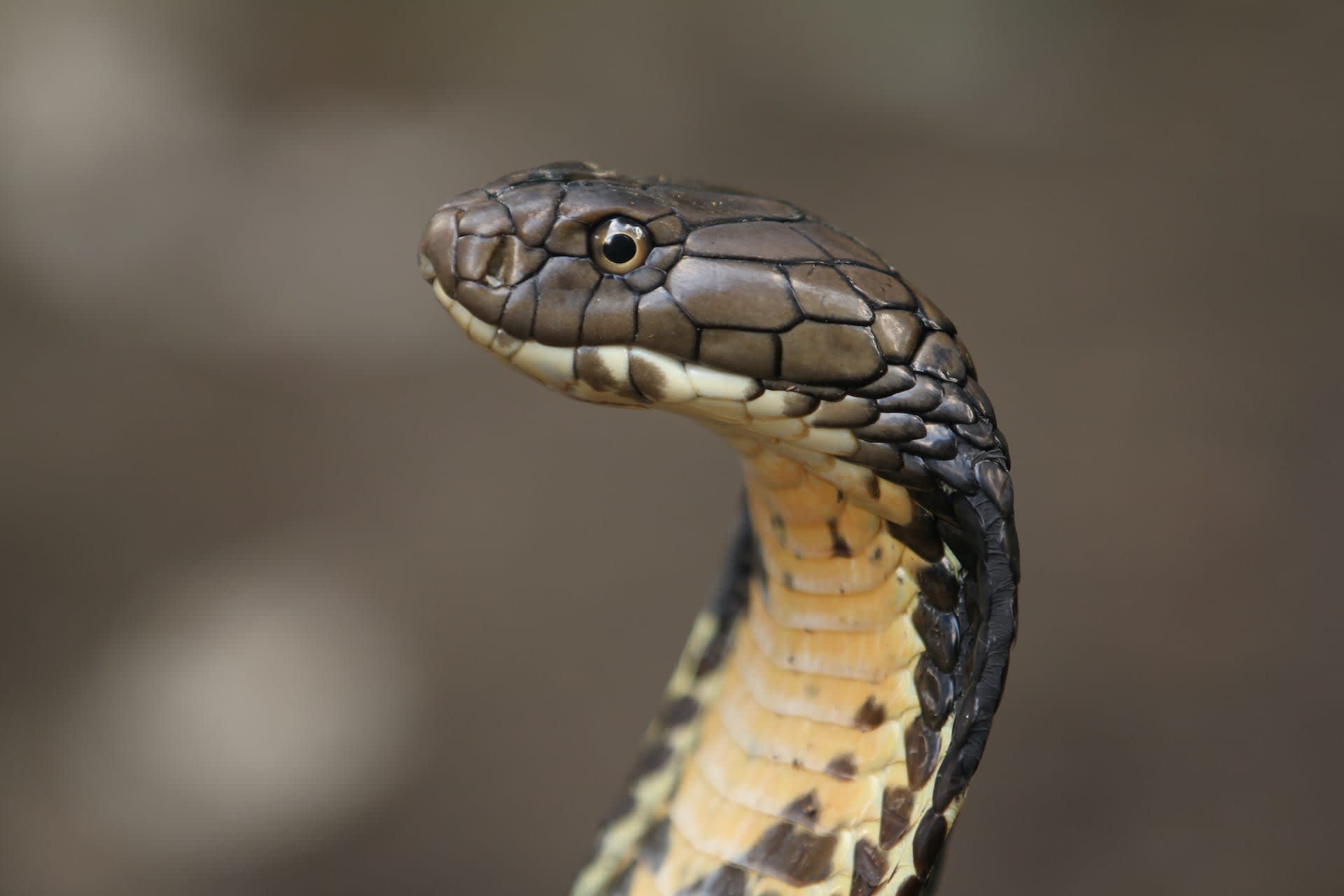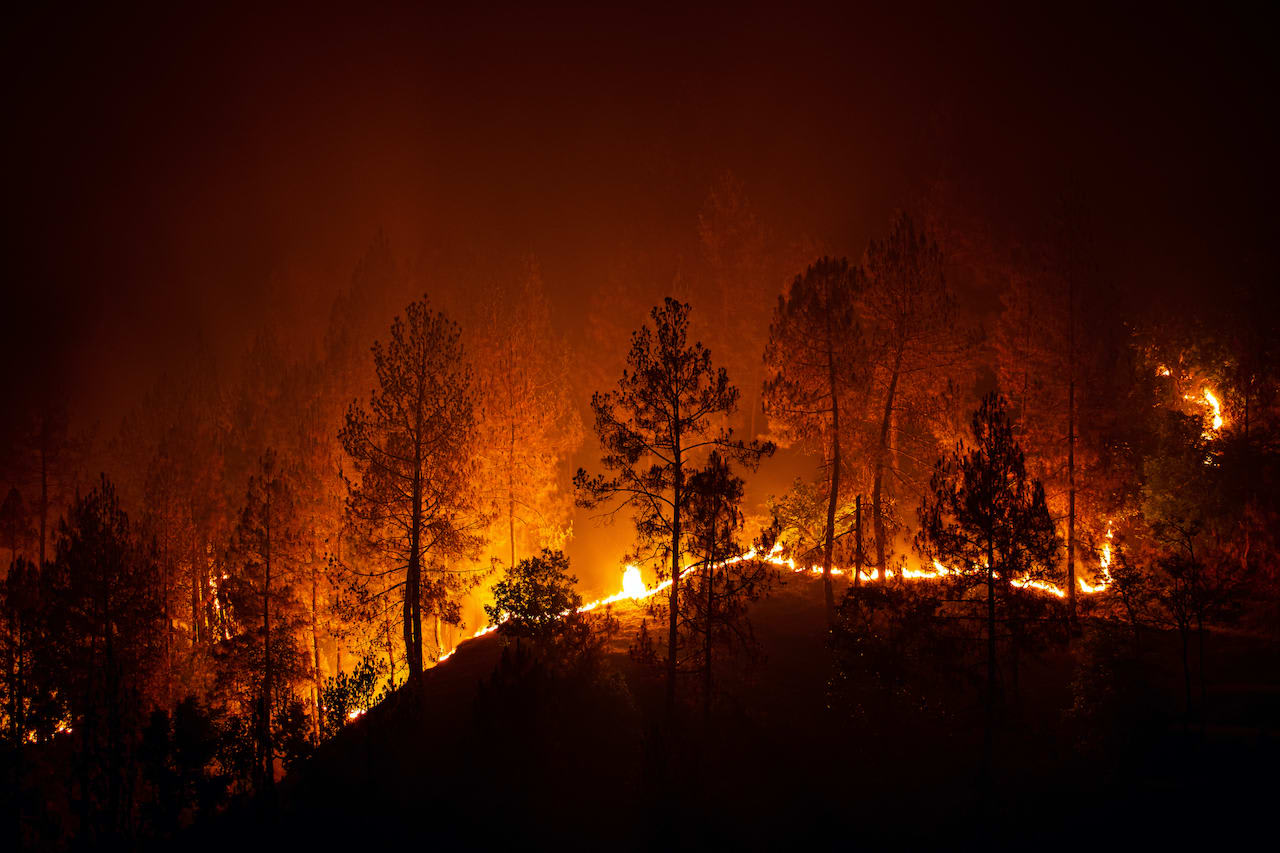 Listen to this article
•
15:34 min
Listen to this article
•
15:34 min
Perhaps with wild animals, the ones vastly swifter and stronger than us, we see brute force, but we unsee the restraint they often display. In their flash of tooth, we find our fear, not appreciating that unlike some of us, wild animals will not attack or destroy just because they can. A snake biting a person registers as an encounter. A snake choosing not to bite a person doesn’t register as the snake’s wilful choice, or any sort of interaction at all. It is put down to dumb luck, a tabeez (good luck charm) tied around arms, the location of the sun that day, or the prayers our mothers have sent for us.
Indian Forest Service officer Sanjiv Chaturvedi, posted in Haldwani, close to Nainital in Uttarakhand, has an even more interesting story to narrate. Around Nainital, king cobras make nests out of what they find on the forest floor.
At that altitude, nests are made of sharp chir pine needles, and papery leaves from oak trees. ‘The king cobra makes a beautiful, dome-shaped nest. I just keep thinking—the snake has no legs, no thumbs, no feet. To make a nest, the female probably has to pick up each component with her mouth, slither over the forest floor and create this stunning architecture,’ Chaturvedi says. In Jeolikot near Nainital, not far from where he is posted, Chaturvedi got news that village women collecting biomass chanced upon a mound of dry leaves and pine needles. It seemed like a godsend—it meant their search could be cut short. They put their hands on the mound, dismantling its body, taking away the pine needles in handfuls. The ‘mound’ was actually a king cobra nest, made with careful precision, each part collected and placed in a secret harmony. The mother was nearby. She didn’t attack the women.
Chaturvedi is amazed.

‘There is something majestic about these snakes. It’s not just their size. It’s the fact that they have discretion,’ he says, echoing what Janaki from Chennai expressed, and what Manjeet from Chhattisgarh said.
But king cobras are under increased stress. They are globally evaluated as vulnerable to extinction. The deep forests they like to inhabit in the Western Ghats, north-east India, Odisha and Maharashtra are getting hacked, bisected and thinned. There are cobras in kitchens, and king cobras in toilets now, because kitchens, toilets and bedrooms are being made where the snakes used to live. In October 2019, a 15-foot-long king cobra was rescued from a toilet in Balimela, Odisha. And a month later, in November 2019, a King Cobra was rescued from a train through Uttarakhand, specifically from the Kathgodam Railway Station.
In the Western Himalayas, the king cobra faces another threat—forest fires. In the searing months of April and May, forest fires blow through the lower Himalayas, gutting the slopes. Chir pine forests—an introduced species—blaze like merry matchboxes. Forest fires take days, sometimes weeks, to be contained. If you were a wild animal, and your world was burning—walls of scorching fire leering at you—what would you do? You would fly if you were a bird, run if you were a mammal. If you were a baby king cobra just emerged from a nest, you would slither. But you would have just entered the world from the safety of an egg and your mother’s gaze. You would not have been prepared for the ground becoming a boilerplate, for your nest becoming a ball of fire. You would die. Perhaps so would your mother. Reptiles are amongst the worst casualties in forest fires, unable to flee from flames. Chaturvedi is worried that with climate change, forest fires will increase, coinciding with the nesting season of the king of cobras. Where will India’s national reptile go?

If one takes the view of the snake, the world can be a terrifying place. Nests turning to ash, the snakes being hunted for a snake- dance or being force-fed milk, and losing habitat nearly every day. It’s a heated, contested, aggressive world.
Yet, we tend to blame snakes for being the cold-hearted reptiles that bite, for being unintelligent and lacking in empathy. Yes, a venomous snake might bite. But it hasn’t read the Indian Penal Code. It doesn’t understand the meaning of murder, only the instinct of self-defence. A snake is not an evil thing, brimming with malice and criminal intent. It is just a snake.
In appreciating snakes for what they are — as animals who exercise choice and who are unlikely to bite unless provoked — Manjeet, Janaki and Sanjiv show us that snakes are so much more than the sum total of our prejudices and fictions.
And, to not be bitten is to receive the ultimate acceptance by snakes. It means you have advertently or unwittingly given the snake the respect it deserves. This is Harry Potter’s Hippogriff moment. In Harry Potter, the magical Hippogriff let Harry ride on its back once the proud animal had accepted the courteous, deferential Harry. In real life, consider yourself blessed if you haven’t been a nuisance to a venomous snake and it chose to depart in peace rather than give you some of its teeth.
Excerpted with permission from Wild and Wilful: Tales of 15 Iconic Indian Species by Neha Sinha, published by HarperCollins Publishers, Price: Rs 599






